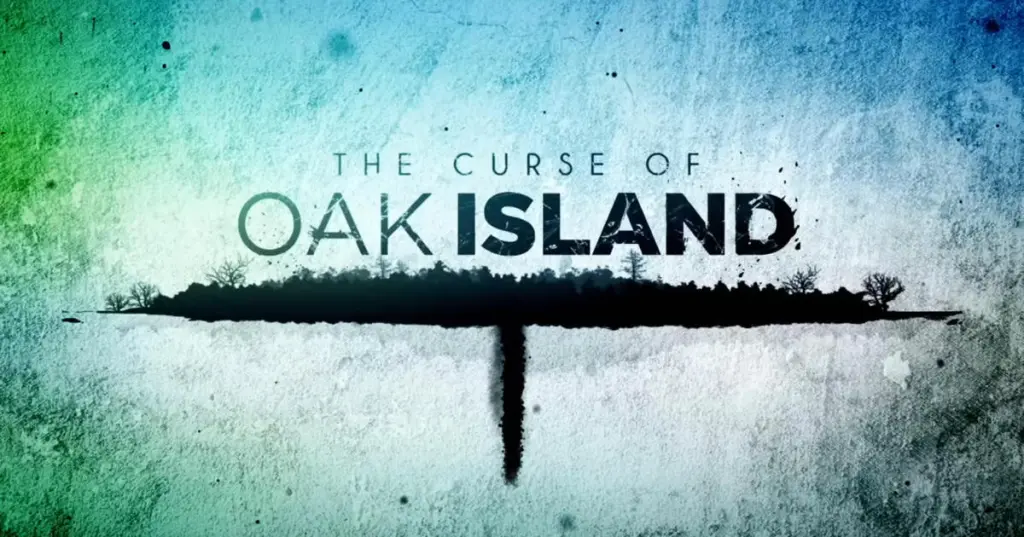Introduction to the Curse of Oak Island
Oak Island, located off the coast of Nova Scotia, Canada, is shrouded in mystery and steeped in legend. The island has been the focus of intense speculation and exploration, primarily due to an enduring belief that it harbors hidden treasures. This intrigue can be traced back to the late 18th century when a group of young men discovered a peculiar depression in the ground, spurring initial excavations that would ultimately evolve into a quest that has captivated treasure hunters and historians alike for over 200 years. The so-called ‘curse of Oak Island’ suggests that those who seek to uncover its treasures face misfortune, a narrative compounded by numerous accidents and unexplained incidents that have befallen the explorers.
Historically, the island has witnessed various attempts to reveal its secrets, with many tantalizing discoveries including unusual artifacts and evidence of man-made structures. These findings have led to numerous theories regarding the identity of the treasure buried beneath the soil—ranging from pirate gold to lost manuscripts. Such speculations have not only fueled exploration but also generated a captivating cultural phenomena, as the mystery of Oak Island has been featured in numerous books, television shows, and documentaries, notably the popular series “The Curse of Oak Island,” which has brought the legend to an even wider audience.
The island serves as a cultural touchstone, representing the age-old human fascination with treasure and the unknown. This ongoing narrative surrounding Oak Island has inspired generations, drawing people from all walks of life to participate in the search for truth beneath its surface. As we delve deeper into the history, discoveries, and legends of the curse, we uncover the rich tapestry that has made Oak Island a focal point of treasure hunting mythology.
Historical Discoveries and Key Players
The Curse of Oak Island has enticed treasure hunters and historians alike, with its rich tapestry of historical discoveries and key players influencing the narrative over centuries. The earliest serious search for treasures began in 1795 when a group of teenagers stumbled upon a depression in the ground, later named the Money Pit. They unearthed layers of oak logs, leading to speculations about hidden treasures buried beneath the surface. Despite numerous excavations since then, the exact nature and origin of the treasures remain elusive.
Over the years, many notable figures have embarked on the quest to unlock the island’s secrets. Among them, Frederick Blair, who became a prominent voice in the Oak Island community during the 20th century, undertook significant diggings, notably in the 1930s. His efforts brought renewed interest in the island, but like many before him, he faced a myriad of challenges, including flooding and shifting ground conditions, which hindered any meaningful progress in uncovering the famed treasure.
curse of oak island Parallel to this, the search witnessed key episodes in its history, such as the discovery of the “stone slab” engraved with mysterious symbols, which many interpret as evidence of a treasure map. This discovery further fueled speculation about the island’s storied past and the potential fate of those who had pursued it. Each excavation introduced new teams and equipment, altering the strategies applied to the hunt. Generational shifts in technology, including sonar scans and modern drilling techniques, have sometimes resulted in discoveries that reignite the fervor surrounding the curse.
Today, the saga continues with renewed vigor, primarily through modern media representations and documentaries, which add layers to the historical narrative. The ongoing investigations underscore the enduring allure of the curse of Oak Island, reflecting not only the hope for treasure but also the stories of those who have dedicated their lives to unlock its secrets. Each new discovery, regardless of outcome, enriches the collective history of Oak Island and perpetuates its legacy.

Theories and Speculations Surrounding the Curse
The curse of Oak Island has captivated audiences for generations, sparking a myriad of theories and speculations regarding the treasures believed to lie beneath its mysterious surface. One prominent narrative suggests that the island may contain hidden pirate treasure, possibly linked to the infamous Captain Kidd, who was known for burying valuables along the Eastern seaboard. The allure of gold and jewels drives this theory, though concrete evidence remains elusive.
Another compelling speculation involves the Knights Templar, an enigmatic group whose historical association with treasure and secrecy adds a layer of intrigue. Some proponents suggest that the Templars may have hidden religious artifacts on Oak Island, including the Holy Grail or the Ark of the Covenant. This theory is fueled by occasional discoveries of symbols and markings that enthusiasts believe could be linked to Templar lore, though skeptics argue that these interpretations lack sufficient historical backing.
The Impact of ‘The Curse of Oak Island’ TV Series
‘The Curse of Oak Island’ television series has significantly influenced public fascination with the enigmatic island and its historical treasures. Premiering in 2014, the show has captivated audiences with its blend of adventure, intrigue, and mystery, painting a vivid picture of the island’s legends while presenting a modern-day treasure-hunting narrative. This portrayal has reinvigorated interest in Oak Island’s lore, encouraging both fervent devotees and casual viewers to explore its secrets.
curse of oak island The series follows brothers Marty and Rick Lagina and their dedicated team as they unravel the mysteries of Oak Island, often leading to suspenseful cliffhangers that enhance viewer engagement. This depiction of the treasure-hunting team not only emphasizes their determination but also casts a spotlight on the various historical theories associated with the island, promoting discussions about the potential existence of hidden treasures and artifacts. Consequently, the show has spurred an increase in public interest and curiosity, leading to a renewed focus on local history and folklore.
The ramifications of the series extend beyond mere entertainment; they have had a tangible effect on tourism and local culture. More visitors are drawn to Oak Island, eager to witness the sites featured in the series and possibly share in the excitement of treasure hunting. Local businesses have thrived with this influx, as tourists seek guided tours, memorabilia, and historical insights about the island. However, there is ongoing discourse regarding the factual accuracy of the series, with some researchers arguing that certain elements are dramatized for entertainment purposes. Despite this, the show undeniably plays a pivotal role in inspiring further research and exploration into the treasures of Oak Island, intertwining media and legend in a compelling narrative that continues to enchant audiences everywhere.
